A bright sun is shining through the windows of the Gardiner Museum’s ground floor space and it is immediately sucked into the black pile of a clay sculpture. What a contrast it makes. Situated just beyond the ticketing kiosk, is a small exhibition, titled So Be It, consisting of nine photographs and a sizeable sculpture “That, There, It.”
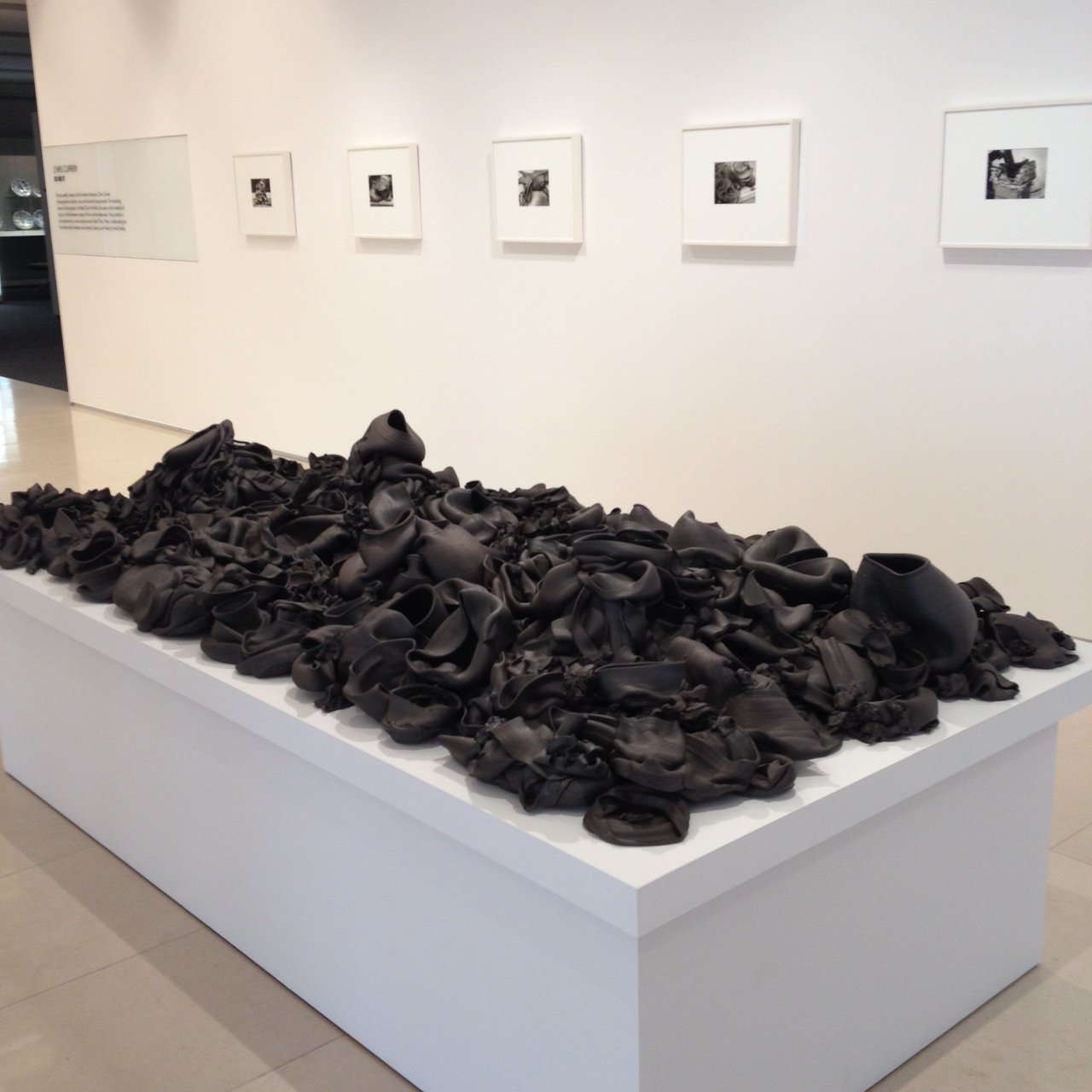 Installation view with That, There, It, 2015, black clay, 1.2 x 2.4 meters. Photo: Courtesy of The Gardiner Museum
Installation view with That, There, It, 2015, black clay, 1.2 x 2.4 meters. Photo: Courtesy of The Gardiner Museum
Even though the contrast between the space and the sculpture is intriguing, it is not the best setting for the photographs. Whereas the sculpture absorbs the light like a black hole, the photographs – covered with glass for protection – end up reflecting it. None of the photographs are titled or numbered, nor are they in any particular order other than what the curatorial aesthetics dictated. For the convenience of this article, I have numbered them starting from the left to the right. Number one from the left has the most connection to the sculpture, displaying a similar but smaller pile of discarded clay objects. I find the relationship between number five and number seven the most interesting. Number five is of a machine that collects and compacts scrap clay into a wet, messy mass that has an organ-like squishiness. In number seven, it comes out perfect: smooth, dense, and sinewy. It has the most satisfying sense of mass, and a perfect balance of disturbing and pleasing. Number seven acts as a form of relief to number five.
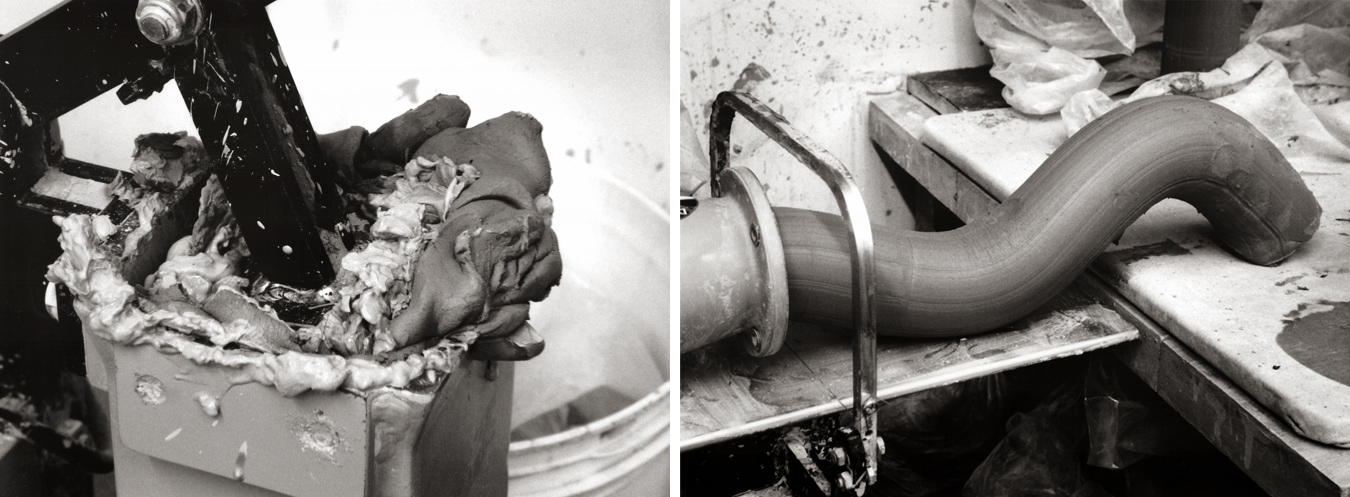 Chris Curreri, Untitled (Clay Portfolio), 2013, gelatin silver print, 7 3/4 x 5 3/4 in., from a portfolio of 21 images. Photo: Courtesy of The Gardiner Museum
Chris Curreri, Untitled (Clay Portfolio), 2013, gelatin silver print, 7 3/4 x 5 3/4 in., from a portfolio of 21 images. Photo: Courtesy of The Gardiner Museum
Some other photographs carry a similar sense of mass and density as well. Number eight contains beautifully composed organic loops that remind us of flesh, while number nine is a pile of bags containing amorphous chunks of clay that aesthetically hint at body parts. Similarities between clay and flesh can be pondered further here.
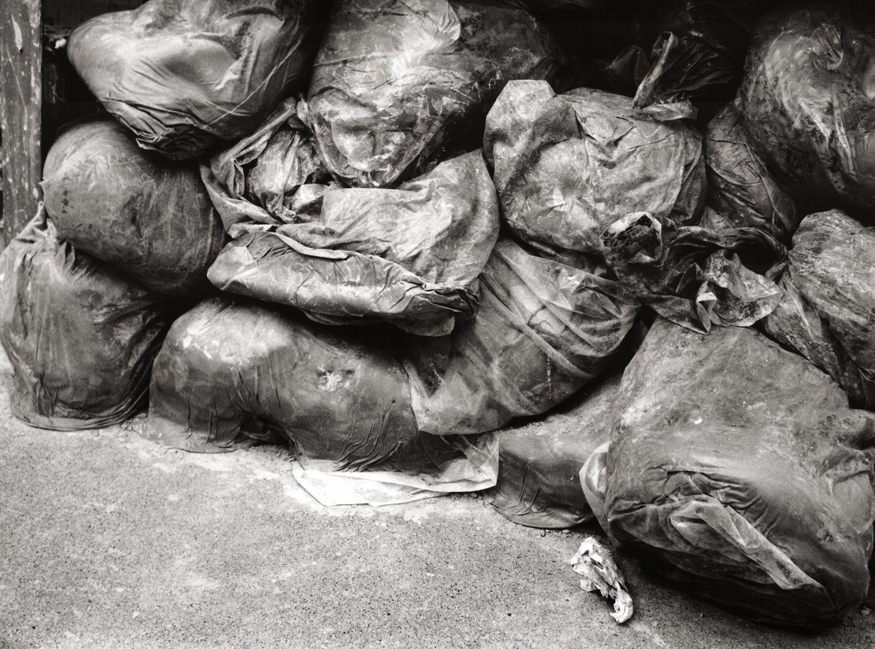 Chris Curreri, Untitled (Clay Portfolio), 2013, gelatin silver print, 7 3/4 x 5 3/4 in., from a portfolio of 21 images. Photo: Courtesy of The Gardiner Museum
Chris Curreri, Untitled (Clay Portfolio), 2013, gelatin silver print, 7 3/4 x 5 3/4 in., from a portfolio of 21 images. Photo: Courtesy of The Gardiner Museum
While the photographs have motion, spontaneity, and organic movement, the sculpture seems dead. The presentation is reminiscent of a funeral. It’s positioned on a low, rectangular table and visitors surround it as if to give respect – I can almost hear a hymn. It is grim, composed of mangled pieces of discarded vases and cups that look like body parts. This sinewy illusion comes from Curreri’s glazing technique. Even though it is completely dry and hard, the sculpture maintains a fresh wetness. It looks pliable. The different levels of elevation also participate in the downward motion of the sculpture while at the same time keeping it from sinking into itself. However the surrounding environment sinks into the sculpture, since it consumes all the light.
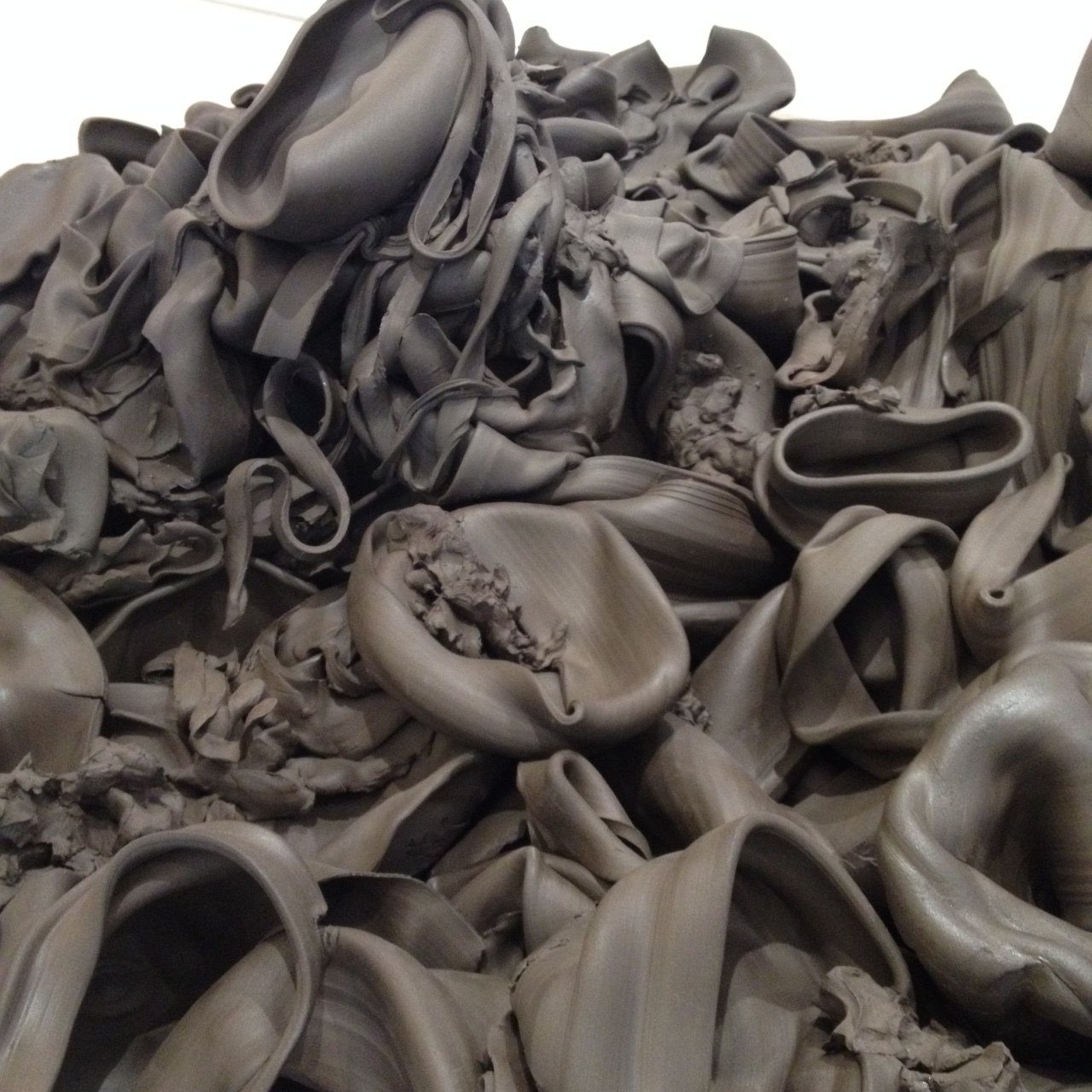 Chris Curreri, That, There, It, 2015, black clay, detail. Photo: Courtesy of The Gardiner Museum
Chris Curreri, That, There, It, 2015, black clay, detail. Photo: Courtesy of The Gardiner Museum
The sculpture also lacks the qualities of some of the photographs. It is rather resolved and self-aware, while the photographs are more adventurous – even experimental. “That, There, It” is made up of countless pieces that are numbered, like a puzzle. But despite the illusion of freshness, this work is precise and only holds together the way the artist planned.
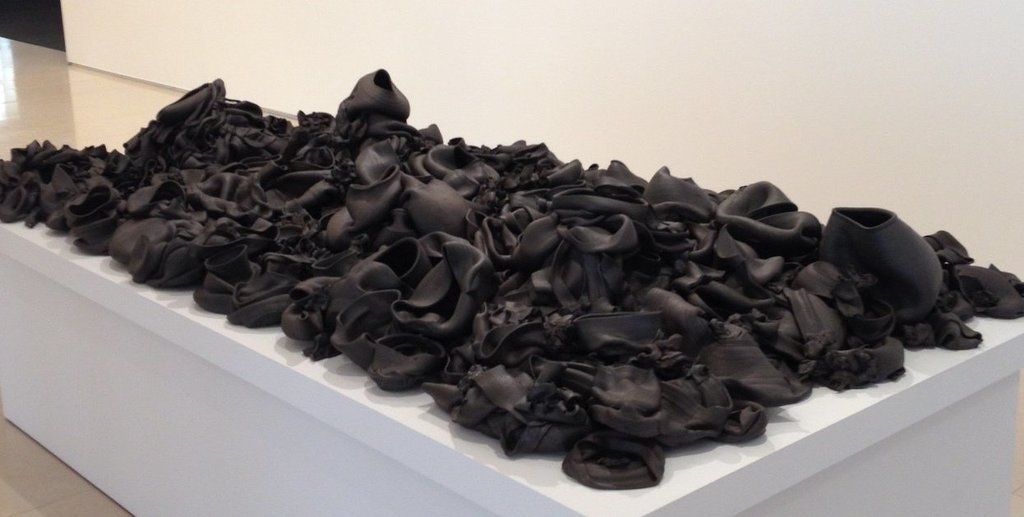 Chris Curreri, That, There, It, 2015, black clay, 1.2 x 2.4 meters. Photo: Courtesy of The Gardiner Museum
Chris Curreri, That, There, It, 2015, black clay, 1.2 x 2.4 meters. Photo: Courtesy of The Gardiner Museum
So Be It is a refreshing approach to ceramics. The imperfections that appear through the procedure are celebrated here to the extreme and made permanent as well. These objects become treasured pieces instead of unusable and failed by-products.
Sunny Kim
*Exhibition information: May 1 – 31, 2015, The Gardiner Museum, 111 Queen’s Park, Toronto. Gallery hours: Mon – Thu, 10 – 6, Fri, 10 – 9, Sat – Sun, 10 – 5 p.m.
